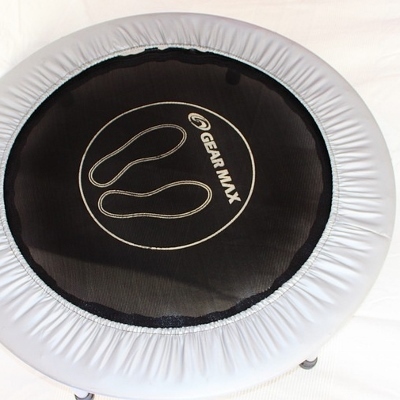 This is the first installment of a two part series on optimal food choices throughout the day. Check back in two weeks for afternoon nutrition tips.
This is the first installment of a two part series on optimal food choices throughout the day. Check back in two weeks for afternoon nutrition tips.
It’s no wonder people are so confused about how to eat right these days! I recently found a meal plan in a “health†magazine that was created by a dietician. While the meal plan isn’t completely atrocious, it’s not exactly as healthy as you might think. So, I decided to take this so-called “healthy food plan†and revamp it to show it what a healthy daily food plan should really look like!
Morning Meals and Snacks
7 a.m. Health Magazine Meal:
1 whole egg and two egg whites scrambled with onions, green peppers, and tomatoes; 1 slice whole grain toast
Melissa’s Tips:
Eggs
This business about eating just the egg whites is nonsense—eat the whole eggs! Whole eggs that come from a healthy source contain a balance of omega-3 and omega-6 fatty acids. They are also a great source of protein. In fact, the proteins found in eggs have shown to help lower blood pressure (The Sunny Side of Eggs, Mercola.com.)
And what about the cholesterol? Cholesterol is not the bad substance it’s made out to be—it’s actually a healing substance that’s produced in your body and is present in every cell. Cholesterol is essential for growth and development, and it is needed to produce various steroids that protect against cancer, heart disease, and mental illness (Nourishing Traditions, Sally Fallon.) Eating eggs does not increase your “bad†cholesterol nor does it increase your chances of heart disease.
Just be sure to eat free-range, organic eggs to ensure that you’re feeding your body the good stuff!
Bread
The grains used to make bread flour are highly refined, which means it’s basically like eating sugar; therefore, bread should be consumed in limited quantities. I don’t recommend having it as a staple in your breakfast.
When you do buy bread, buy breads that are made with organic, sprouted grains and make sure that you can pronounce all of the ingredients on the label—you may be surprised by some of the additives that food companies put in commercial bread!
Also consider the fact that many types of bread like wheat and rye contain gluten, a protein found in certain grains. More and more people are realizing that they may be dealing with “hidden gluten intolerance,†and they feel better when they eliminate gluten from their diet completely. If you suspect that you could be gluten intolerant, try eliminating it for a minimum of three months. If you’re thinking that you just couldn’t live without gluten, believe me you can! I do it, and I don’t miss it!
9:30 a.m. Health Magazine Snack:
One apple with low-fat string cheese
Melissa’s Tips:
Apples
The Environmental Working Group (EWG.org) has listed apples on their “Dirty Dozen†list.  What this means is that apples (among 11 other fruits and veggies) contain the highest residues of pesticides. Eating an all organic diet is challenging for most people, so a good place to start transitioning to organics is with the fruits and veggies you eat from the Dirty Dozen list. To learn more go to: www.FoodNews.org.
Low-Fat Cheese
You should avoid anything low-fat or nonfat. Food processing companies remove the fat and replace it with chemicals like salt and sugar. And do you know what salt and sugar make you want to do? Eat more! Low-fat and nonfat foods only make you sick and fat, so do not put that garbage in your body!
Eat whole, organic cheese instead. Your body actually benefits from the healthy saturated fats that are naturally occurring in animal products like cheese. Saturated fats play many important roles in sustaining a healthy body such as maintaining the integrity of your cell membranes and bone structures, enhancing your immune system, and protecting your liver from toxins.
11:30 a.m. Health Magazine Snack:
4 ounces plain nonfat Greek yogurt topped with ½ cup Cheerios
Melissa’s Tips:
Nonfat Yogurt
As I said above, I suggest avoiding anything nonfat. Eat whole, organic yogurt instead. Organic yogurt comes from cows that have not been injected with hormones and antibiotics. The cows should also have been allowed to graze freely, eating mostly grass. The health of the cow directly impacts the quality of the milk used to make the yogurt.
Cheerios
Cheerios, despite their clever marketing, are not good for you. There really is no such thing as a healthy boxed cereal. The grains used in commercial cereals may not only be genetically modified and bleached, but they are often processed by high heat to create the fun shapes, which destroys most, if not all, of the nutrients. Commercial cereals are then “fortified†with vitamins.  This processing also damages the digestive enzyme, phytase, which only makes cold cereals hard to digest.  According to Sally Fallon, author of Nourishing Traditions, “studies show that these extruded whole grain preparations can have even more adverse effects on blood sugar than refined sugar and white flour!â€
So what’s a healthy substitute for cheerios to put in your yogurt? I like to put fresh fruit like mixed berries.  And for some crunch, I add ground flaxseeds and mixed nuts. You could also add granola—I like a raw granola made by “Go Raw,†but you could easily make your own. Be cautious of the commercial, store-bought ones because they have a ton of sugar and additives.
Leave me a comment on FriendYourBody.com.






[…] Eat This NOT That! Part 1 […]